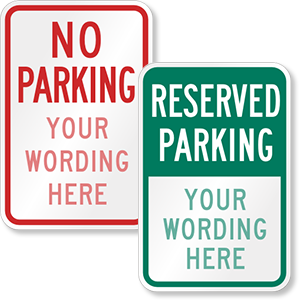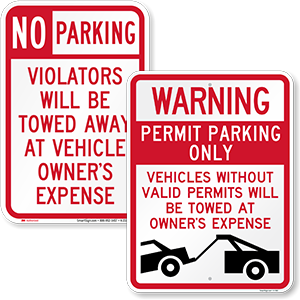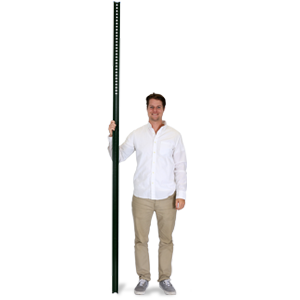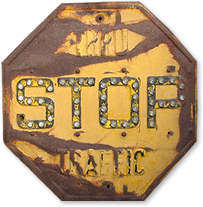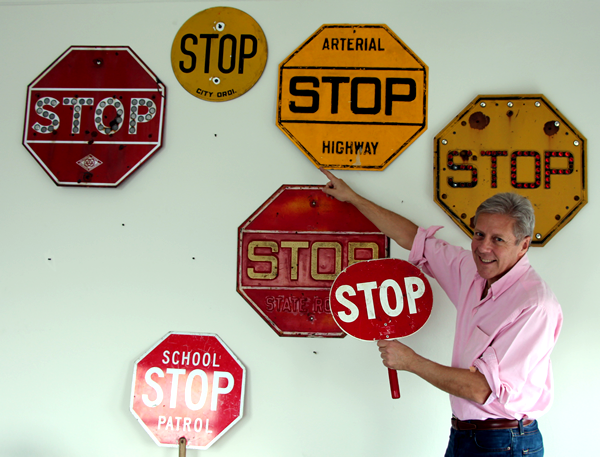
First Stop Signs Date from 1914
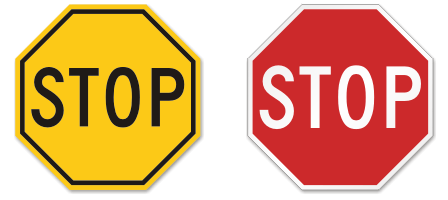
Yellow old-style stop sign (1924-1954) Vs. Red new-style stop sign (1954-present )
Originating in Detroit, Michigan in 1914, the earliest stop sign had black letters on a white background and was somewhat smaller in size than the one today. The smaller sizes of stop signs were initially most common, in that they did not require larger punch presses.
Due to confusion of drivers, the American Association of Highway Officials (AASHO) met in 1922 to standardize the stop sign. Attempting to design a unique sign to prevent uncertainty, the AASHO devised a unique octagonal shape that would alert drivers to stop. In 1924 the stop sign was changed to black on yellow by the National Conference on Street and Highway Safety (NCSHS), which was the prevailing color until 1954. They regulated the signs to be mounted two or three feet above the ground. Another group (the predecessor to the MUTCD) had similar, but not identical ideas. The 1935 MUTCD regulation defined that stop signs should be octagonal, but with red or black letters on a yellow background.
The Manual on Uniform Traffic Control Devices (MUTCD) stop sign was altered eight times between 1935 and 1971, generally regarding mounting height or reflectorization. However, the most significant change was the 1954 alteration to white on red color. The modern US stop sign, white on red, mounted 2.1 meters (7 ft) above ground, 30" long with a 3/4" white line around the edge, was passed into law in 1971 – although 24" stop signs are also allowed.
English speaking and European Union stop signs use the word "STOP". Of course, many non-English speaking countries prefer to use the word in their own language on the front of a stop sign. Most countries have adopted the red octagonal shape, like China, Canada, Brazil, Turkey, Mexico, South Korea, and many others, but there are exceptions, like Japan, which uses a triangular sign. China's old stop sign was triangular as well, but they too have adopted the octagonal form, simply displaying the Chinese word for stop (pronounced ting). This sign is almost identical to the one used in Taiwan. In Hong Kong, like many countries, English is situated on top of the other more common language.
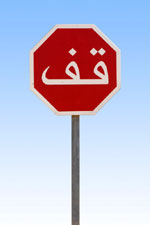 Arab Countries
Arab Countries
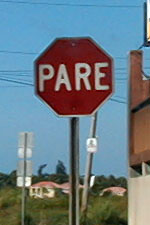 Brazil
Brazil
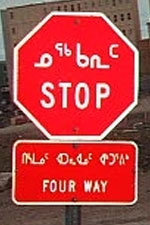 Canada (Nunavut)
Canada (Nunavut)
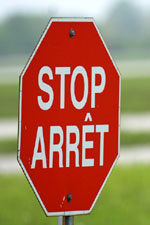 Canada (Québec)
Canada (Québec)
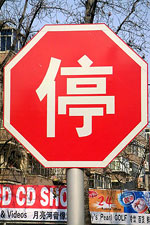 China
China
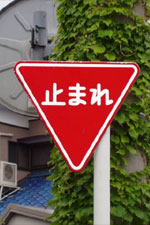 Japan
Japan
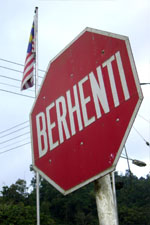 Malaysia
Malaysia
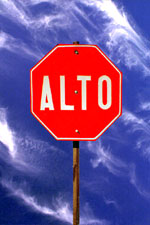 Mexico
Mexico
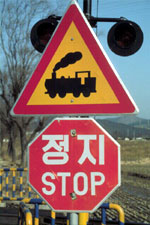 Sourth Korea
Sourth Korea
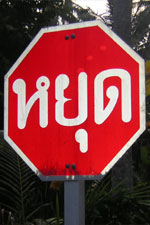 Thailand
Thailand
In Canada, however, there are several different signs used. In Quebec, the French word for stop is written on face of the stop sign, while in Nunavut, they use the word in the Inuktitut language. "PARE", a Spanish and Portuguese word for stop, is used in Brasil, Argentina, Ecuador, Peru, Dominican Republic, and Colombia. In Mexico, however, "ALTO" is used.
Although stop signs are not used at every intersection, they are extremely important because they control traffic in dangerous areas. Stop signs require the driver to make a brief and temporary stop, quick glance, and then proceed carefully. This can possibly prevent an accident from occurring. As a result, it is imperative that the sign is comprehensible to everyone of any country, which is why many countries have adopted the format of the modern US stop sign, in terms of shape, size, and color.

Yellow Stop Sign from 1940’s
In the US, not only the color has changed. The glass reflectors have been replaced with reflective glass bead and prismatic technology. Moreover, the message and type font have been simplified.
Yellow old-style stop sign from 1940s
Stop Signs from the 1920’s to the 1950’s.
– Katy Brewster
See Also:

